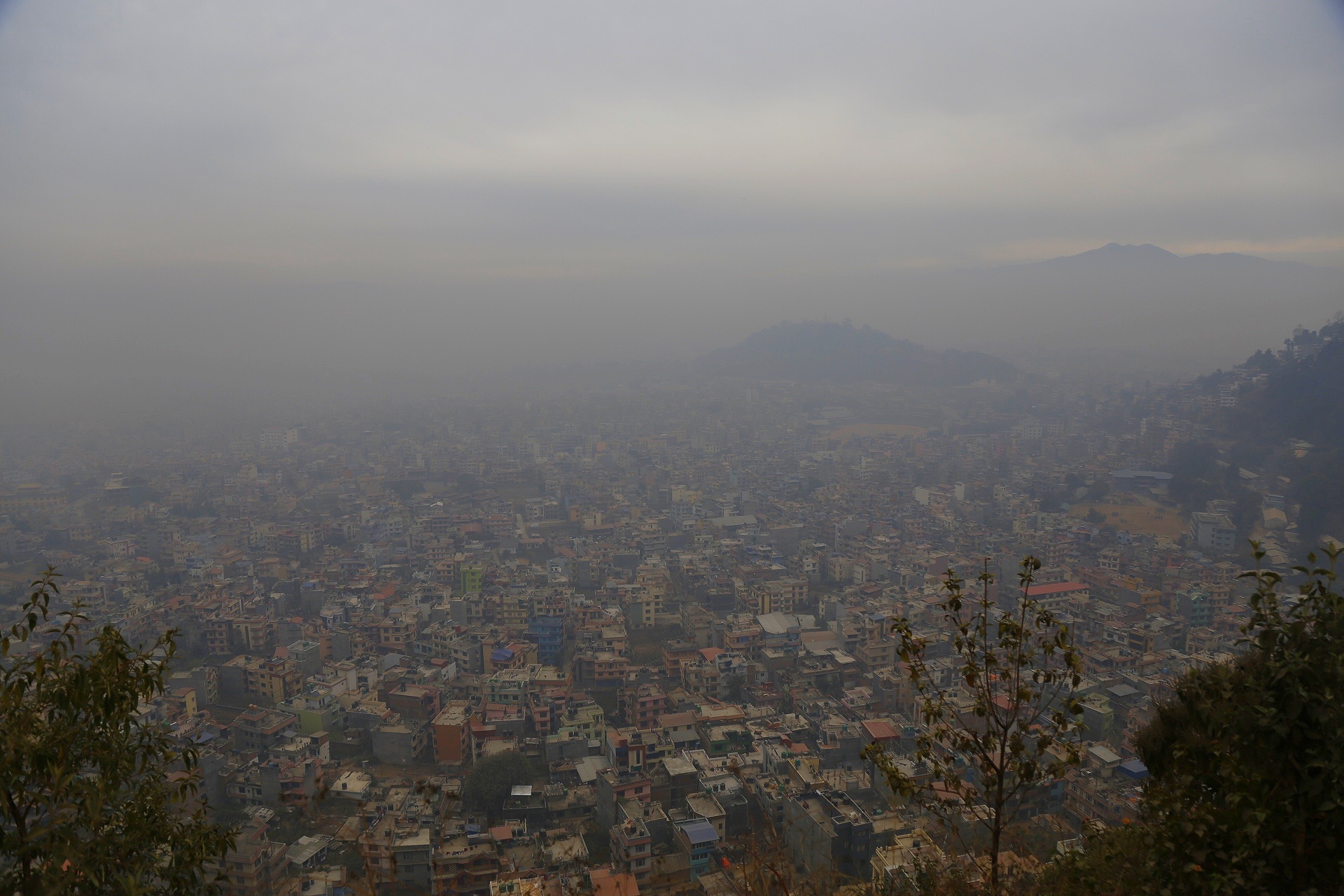
Delaware’s Air Quality and the Sustainable Development Goals (SDGs)
Delaware prides itself on access to green spaces like parks and beaches, reprieves of nature between suburban sprawl, farmland, and cities that provide a dose of fresh air.
But despite these oases, the American Lung Association’s 2024 State of the Air Report finds that Delaware’s air may not be as fresh as you think, and the state has plenty of work to do to reverse that.
What is the State of the Air Report?
The 25th annual report covers air quality from 2020 to 2022 in Delaware and nationally. It grades Americans’ exposure to annual particle pollution, unhealthy levels of ground-level ozone air pollution, and short-term spikes in particle pollution over a three-year period.
The findings include whether local air quality is unhealthy to breathe, which Delaware residents are most vulnerable, and what actions local, state, and national leaders can take to improve air quality.
What is the air quality in each Delaware county?
In Delaware, air quality showed mixed results for fine particle pollution and ozone smog, some of the most widespread and harmful types of air pollution.
Each county continues to receive their best marks yet in terms of ozone smog, but concerns about air quality in the state still linger.
- Grade “A” is a weighted average of 0.0.
- Grade “B” is a weighted average of 0.3 to 0.9.
- Grade “C” is a weighted average of 1.0 to 2.0.
- Grade “D” is a weighted average of 2.1 to 3.2.
- Grade “F” is a weighted average of 3.3 or higher.
New Castle County earned a “C” in the ozone smog category, indicating there are still “too many days with poor air quality.”
Similar to last year, Kent County remains unchanged with a “B” grade.
Sussex County earned its second “A” grade in the ozone smog category by recording zero days with unhealthy levels of ozone.
For daily fine particle pollution, New Castle County received a “B” grade, while Kent and Sussex counties both earned “A” grades for the 13th straight year.
National air quality findings
The State of the Air Report’s findings reflect the success of the Clean Air Act in reducing emissions from manufacturing, transportation, and power plants. However, it also highlights the challenges posed by climate change, which is making it harder to protect human health.
High spikes in particle pollution and ozone days related to drought, extreme heat, and wildfires are putting millions of people at risk and creating challenges to clean up air pollution nationwide.
Over 131 million Americans live in areas with unhealthy levels of air pollution, and 43.9 million people live in areas with failing grades for all measures of air pollution.
Disparities in poor air quality impacts
Due to policy-driven reductions in emissions and climate change-fueled increases in pollution, there is a marked disparity between air quality in eastern and western states, especially for daily fine particle pollution.
Only four large counties in three states east of the Mississippi River earned failing grades for daily spikes in fine particle pollution, compared to 108 counties in 16 western states.
The report highlights that the burden of living with unhealthy air is not shared equally. People of color are more likely to live in counties with failing grades for air pollution measures.
A future with cleaner air
The American Lung Association continues to push for the EPA to set national limits on ozone pollution and encourages Delaware to support policies that would improve air quality.
It is crucial to address air pollution and work towards achieving the Sustainable Development Goals (SDGs), particularly Goal 3: Good Health and Well-being, Goal 11: Sustainable Cities and Communities, and Goal 13: Climate Action.
SDGs, Targets, and Indicators
| SDGs | Targets | Indicators |
|---|---|---|
| SDG 3: Good Health and Well-being | Target 3.9: By 2030, substantially reduce the number of deaths and illnesses from hazardous chemicals and air, water, and soil pollution and contamination. | Indicator not mentioned or implied in the article. |
| SDG 11: Sustainable Cities and Communities | Target 11.6: By 2030, reduce the adverse per capita environmental impact of cities, including by paying special attention to air quality and municipal and other waste management. | Indicator not mentioned or implied in the article. |
| SDG 13: Climate Action | Target 13.1: Strengthen resilience and adaptive capacity to climate-related hazards and natural disasters in all countries. | Indicator not mentioned or implied in the article. |
| SDG 15: Life on Land | Target 15.1: By 2020, ensure the conservation, restoration, and sustainable use of terrestrial and inland freshwater ecosystems and their services, in particular forests, wetlands, mountains, and drylands, in line with obligations under international agreements. | Indicator not mentioned or implied in the article. |
1. Which SDGs are addressed or connected to the issues highlighted in the article?
SDG 3: Good Health and Well-being
The article discusses the American Lung Association’s State of the Air Report, which focuses on air quality and its impact on human health. This aligns with SDG 3, which aims to ensure good health and well-being for all.
SDG 11: Sustainable Cities and Communities
The article mentions the need to improve air quality in Delaware, which is a concern for cities and communities. SDG 11 aims to make cities and human settlements inclusive, safe, resilient, and sustainable.
SDG 13: Climate Action
The article mentions the impact of climate change on air pollution, specifically high spikes in particle pollution and ozone smog related to drought, extreme heat, and wildfires. SDG 13 focuses on taking urgent action to combat climate change and its impacts.
SDG 15: Life on Land
The article does not directly address SDG 15, but it indirectly relates to the goal as air pollution can have negative impacts on terrestrial ecosystems and biodiversity.
2. What specific targets under those SDGs can be identified based on the article’s content?
Target 3.9: By 2030, substantially reduce the number of deaths and illnesses from hazardous chemicals and air, water, and soil pollution and contamination.
The article highlights the need to improve air quality in Delaware to reduce the adverse health effects caused by air pollution.
Target 11.6: By 2030, reduce the adverse per capita environmental impact of cities, including by paying special attention to air quality and municipal and other waste management.
The article emphasizes the importance of improving air quality in cities and communities, specifically in Delaware.
Target 13.1: Strengthen resilience and adaptive capacity to climate-related hazards and natural disasters in all countries.
The article mentions the impact of climate change on air pollution, particularly through drought, extreme heat, and wildfires.
Target 15.1: By 2020, ensure the conservation, restoration, and sustainable use of terrestrial and inland freshwater ecosystems and their services, in particular forests, wetlands, mountains, and drylands, in line with obligations under international agreements.
The article does not directly address this target.
3. Are there any indicators mentioned or implied in the article that can be used to measure progress towards the identified targets?
No, the article does not mention or imply any specific indicators that can be used to measure progress towards the identified targets.
SDGs, Targets, and Indicators
| SDGs | Targets | Indicators |
|---|---|---|
| SDG 3: Good Health and Well-being | Target 3.9: By 2030, substantially reduce the number of deaths and illnesses from hazardous chemicals and air, water, and soil pollution and contamination. | Indicator not mentioned or implied in the article. |
| SDG 11: Sustainable Cities and Communities | Target 11.6: By 2030, reduce the adverse per capita environmental impact of cities, including by paying special attention to air quality and municipal and other waste management. | Indicator not mentioned or implied in the article. |
| SDG 13: Climate Action | Target 13.1: Strengthen resilience and adaptive capacity to climate-related hazards and natural disasters in all countries. | Indicator not mentioned or implied in the article. |
| SDG 15: Life on Land | Target 15.1: By 2020, ensure the conservation, restoration, and sustainable use of terrestrial and inland freshwater ecosystems and their services, in particular forests, wetlands, mountains, and drylands, in line with obligations under international agreements. | Indicator not mentioned or implied in the article. |
Copyright: Dive into this article, curated with care by SDG Investors Inc. Our advanced AI technology searches through vast amounts of data to spotlight how we are all moving forward with the Sustainable Development Goals. While we own the rights to this content, we invite you to share it to help spread knowledge and spark action on the SDGs.
Fuente: delawareonline.com

Join us, as fellow seekers of change, on a transformative journey at https://sdgtalks.ai/welcome, where you can become a member and actively contribute to shaping a brighter future.






